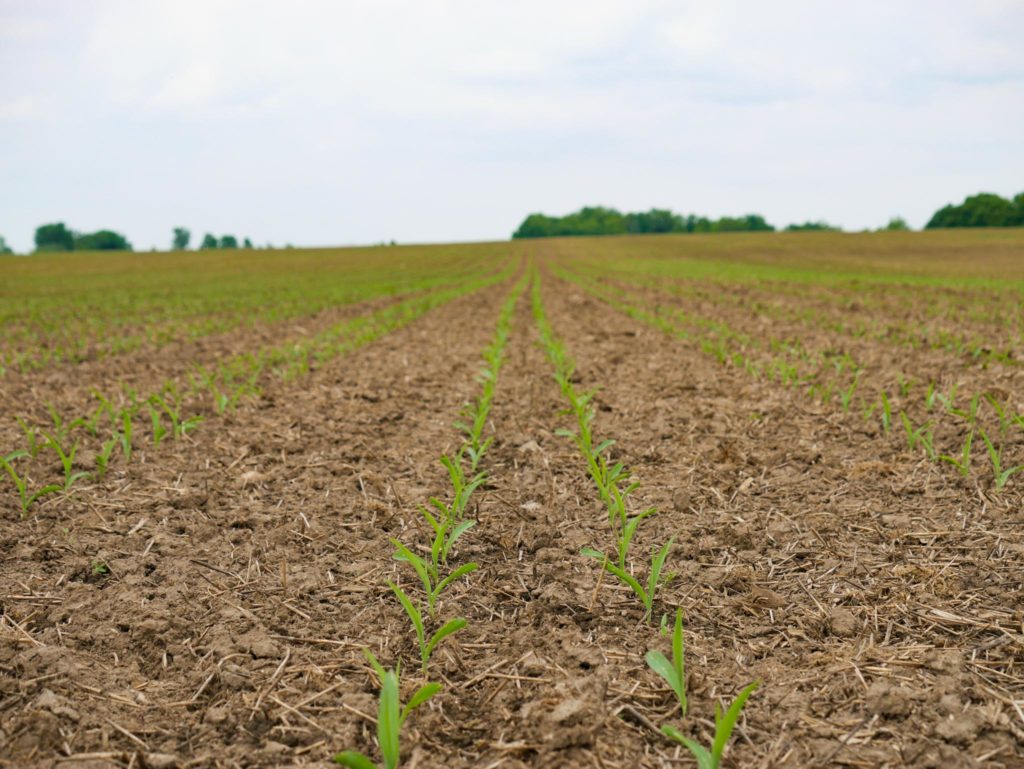Alison King, Genevieve Ali, Adam Gillespie, Claudia Wagner-Riddle. 2020. Soil organic matter as catalyst of crop resource capture. Frontiers in Environmental Science. doi: 10.3389/fenvs.2020.00050
Research summary by Alison King and Cameron Ogilvie
Key Messages
- traditionally, soil organic matter is said to act like a sponge and supplies nutrients to crops, leading to greater crop yields
- this review shows that higher levels of organic matter can encourage root growth
- if more organic matter makes for a larger root system, this could be enough to lead to greater crop yields crops because of better access to water and nutrients
If you’ve followed the soil health news lately, you’ve noticed the flurry of interest in soil organic matter and its connections, anecdotal or disputed, to crop yield. But why is soil organic matter expected to affect crop yield at all?
Traditionally, it’s thought that crops benefit from soil organic matter because it acts like a sponge, holding more water to supply to plants as needed. Soil organic matter also contains nitrogen, and by releasing it slowly to plants organic matter acts as a built-in fertilizer.
But practices that add soil organic matter – like cover cropping or manure applications – increase it by only a moderate amount. Recently, some researchers described how much these practices could increase soil water holding capacity, and they found it was by less than previously thought. Maybe not even enough to affect crops.
If not by water or nitrogen supply, then why do crops benefit from increases in soil organic matter? Researchers from the University of Guelph have pulled together findings from previous studies to arrive at a possible, alternative answer.
What they found
Crops rely on roots to draw up resources, like water or nitrogen, from soil. Better root development means a bigger volume of soil that a crop can explore for resources. While water holding capacity and nitrogen release impact the supply of resources to the crop, root development impacts the crops ability to access what’s already there. This, then, is the new perspective: encouraging better root growth is just as important as increasing the soil’s supply of water and nitrogen. If increases in soil organic matter promote root growth, that alone will better meet the demands of a bigger crop.
And, indeed, there is ample evidence to show that higher soil organic matter encourages better root development. Two common root stressors – waterlogging, which can permanently limit root growth; and compaction, which can similarly restrain root development – can both be alleviated by increasing soil organic matter.
Because the impact of waterlogging or compaction on crops depends on, of course, the crop, cultivar, and weather, this idea implies that different crops will also respond differently to increases in soil organic matter and wouldn’t respond the same in every growing season.
Why it matters
Right now, this perspective doesn’t indicate drastic changes to management . Instead it indicates, with additional studies, a way we might be able to better predict how much soil organic matter increases can buffer crops against stressful situations. This perspective can help explain why, for instance, crops might respond to reduced compaction provided by a cover crop even if there is no change in soil organic matter. This perspective also aligns with why a practice that decreases organic matter – tillage – can in some cases boost yields by providing a drier and less compacted rooting environment.
The biggest change may be reassessing what we measure to determine soil health. Traditional soil health tests focus on soil organic matter and, often, linking it to water holding capacity and nitrogen supply from soil. More of either of these has been equated to better soil health, given the expectation of links to crop yield. This perspective suggests, though, that the “soil supply” side needs to be integrated with the “demand fulfilment” side to understand why and when soil organic matter will increase crop yield.


